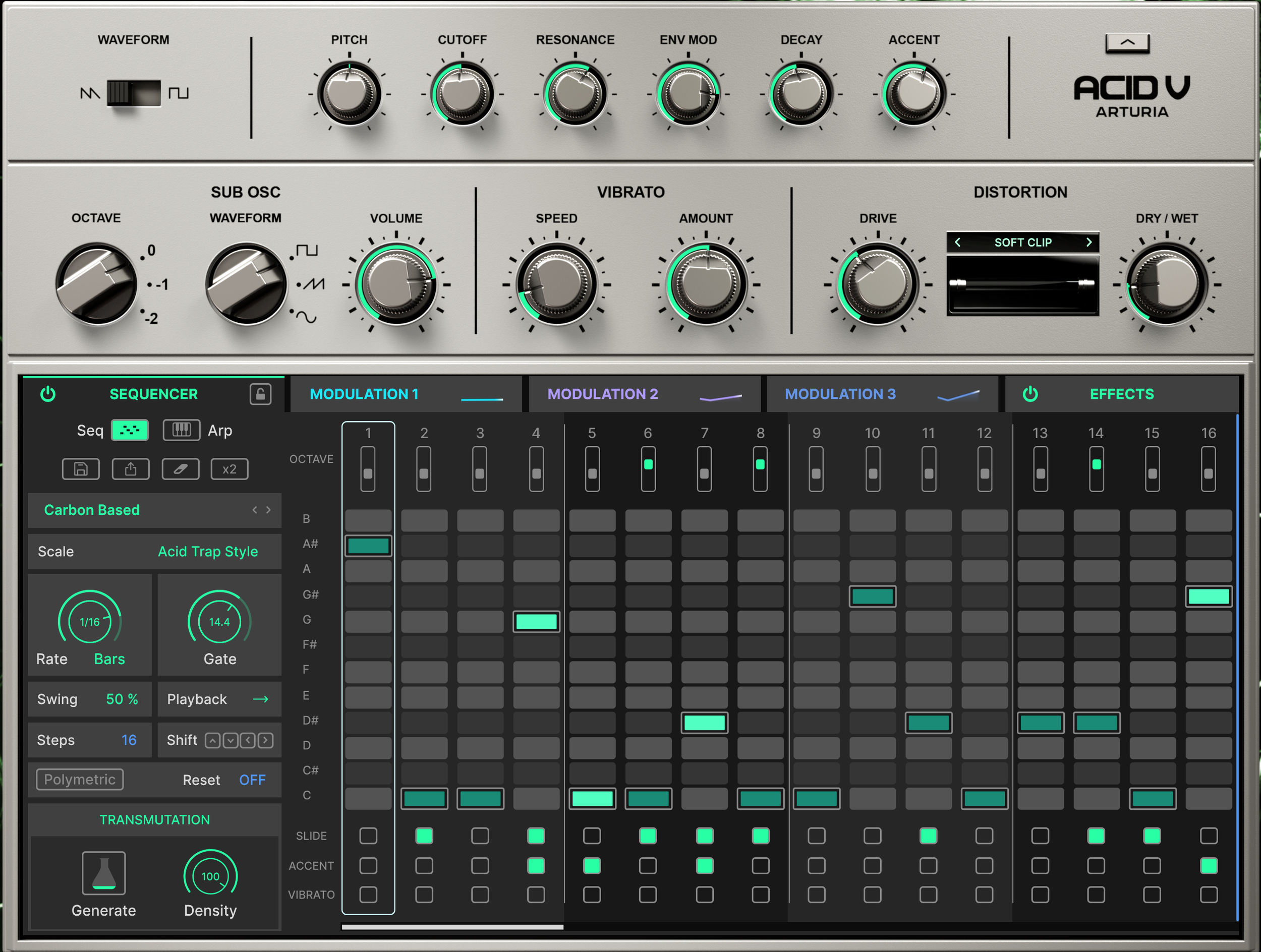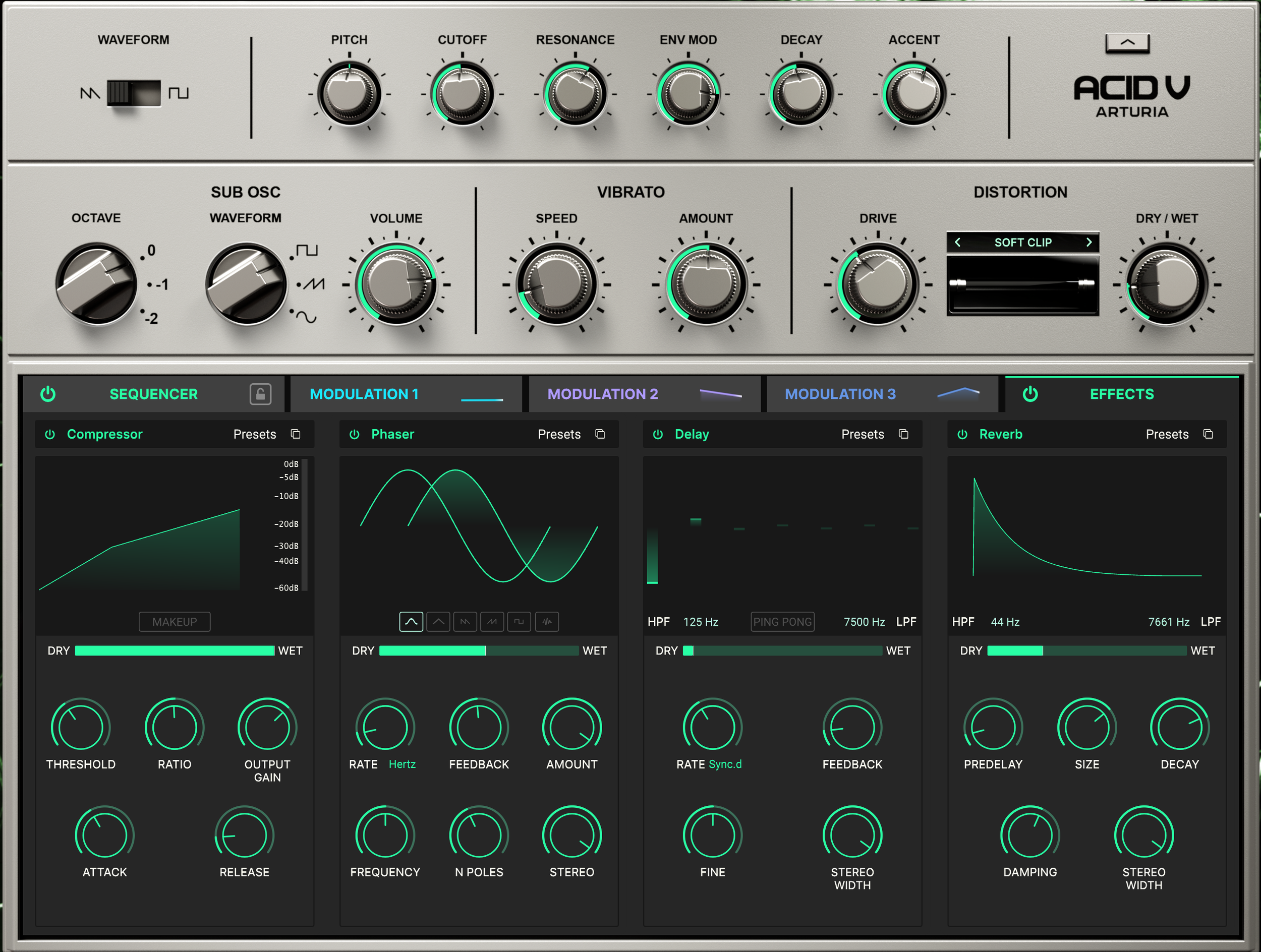ACID V Review
Arturia has sent me their latest recreation Acid V, an emulation of the coveted TB-303, an analog bass line synthesizer. Known for a particularly biting bass tone used in many genres of music, most notably acid, The TB-303 really does what it does well, and not a whole lot else. This recreation is striking, I can’t say how much better or worse it does compared to other software 303 emulations, but I can say I’ve enjoyed nearly every sound I’ve got out of this. Front panel controls are rather limited, both in quantity and in range, In a lot of ways the 303 synth engine is closer to a set of macros that come with a preset than a full blown synthesizer.
Arturia have improved on the classic 303 engine in a few ways, they’ve included a sub oscillator, vibrato, and a very pleasant distortion section which includes over a dozen algorithms that sound tailored specifically towards the 303 acid sound. You can even “open up” the Acid V box to get to the insides and adjust some of the dynamics of the circuit. Also included is Arturia’s effects selection, with a variety of compressors, filters, modulation, delay and even more distortion to play with. You get up to four effects total with many parameters being capable of modulation. Unfortunately, for whatever reason they’ve excluded many effects parameters from modulation, something that isn’t the case in other plugins these effects show up in.
Speaking of modulation, Acid V includes three modulators, these are basic function generators you’d find in pigments or Coldfire. They are synced to the clock by default and are the perfect way to add motion to the controls. Unfortunately they have not included the brush drawing tool from other iterations of these modulators. Being that Acid V is so sequencer focussed, it would have been nice to draw in steps, or even have different pattern lengths. I think I would have liked to see the LFO and Step sequencer options from their other products here for this reason. Applying random steps to this engine would be fun.
On the topic of sequencing, this is where Acid V becomes truly powerful, and where it strays furthest from a hardware 303. They’ve opted not to emulate the classic 303 sequencer, something many people are likely grateful for. Instead there is a typical step sequencer with lanes for octave, slide, accent, and vibrato. Each lane can be its own length in polymeter mode, making for some unique generative pattern design. Applying scales is dead simple and makes hand drawing patterns a blast. There’s also an included pattern creation tool that randomizes all steps and almost always creates something useful (I mean it’s a 303). This includes a density control which randomly deactivates steps for more sparse patterns. You can automate both of these controls as well, but unfortunately the pattern generation does not trigger externally.
I have to say this is one of the most fun plugins I’ve used, it’s so easy to dial in a gnarly acid sound and just spit out various patterns, on top of this you can even drag and drop the midi from the sequencer into your daw, or use Acid V as a midi generator. It just sounds great and gives you enough extra effects, motion, and meters to really make some fun baslines. My favorite thing to do with Acid V already is to stack up three of them with totally different sounds and motion, then set the pattern density to 30% and generate different patterns for each one. This creates entangled syncopated patterns that are all relative but dynamic, especially switching one at a time gives a cohesion to every change that is never too jarring but always interesting. Understandably, the acid 303 sound isn’t for everyone, and if this is the case for you, you might want to avoid this one, but otherwise, I think this will be a staple in my production moving forward.
If you plan on purchasing ACID V from Plugin Boutique, please consider supporting me by using my affiliate link
ACID V: https://www.pluginboutique.com/product/1-Instruments/4-Synth/11083-Acid-V?a_aid=61c378ab215d5



